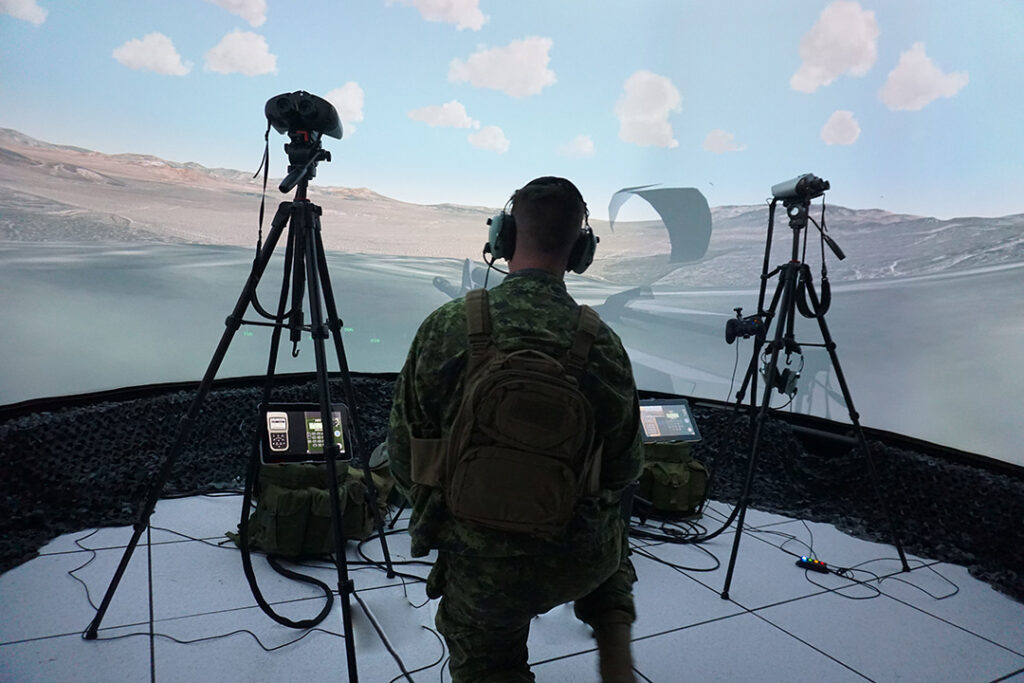THE WATCH STAFF
The United States teamed with military partners Australia, Canada and the United Kingdom to enhance their air-combatcapabilities during the recent Virtual Flag exercises, which for the first time integrated cyberattacks into the simulatedscenarios.
The U.S. Air Force’s 705th Combat Training Squadron, home of Air Combat Command’s Distributed MissionOperations Center (DMOC) at Kirtland Air Force Base in New Mexico, hosted the large-scale operation.
Virtual Flag 2021, which was conducted October 24 to November 5, spanned eight time zones and 20 locations,according to a November 24, 2021, news release from Kirtland AFB.
The exercises focused on combat against a near-peer threat, according to the news release. While fostering inoperability between the U.S. and its allies, Virtual Flag carried out missions in air, space, surface and cyber domains.
“All units operate within a simultaneously live, virtual and constructive environment which allows warfighters to prepare to wage war, and then practice doing so in a synthetic environment so that they can learn how to be combat effective,” the news release said.
For the first time, the DMOC integrated “cyber effects and planning” into the Virtual Flag scenarios. Those consisted of a British cyber protection team, augmented by Canadian intelligence members, that fused cyber intelligence into the larger operational strategy, and an opposing team of Canadian, U.K. and U.S. members attempting to disrupt the operations, according to the news release.
“The 705th has built its Distributed Mission Operations capabilities up over decades and integrating a domain like cyber is a challenge the squadron is excited to face,” said U.S. Space Force Capt. Oliver Peery, the cyberspace operations flight commander at Kirtland AFB, according to the news release.
While the cyber teams were physically located at the base, they worked in a virtual “range” of computers in the U.K.
(Pictured: A Canadian tactical air controller operates in a simultaneously live and virtual environment November 4, 2021, at Kirtland Air Force Base in New Mexico during Virtual Flag 2021.)
The numbers from the operation were impressive in scale: In all, Virtual Flag trained more than 344 participants (200 joint and 144 coalition warfighters) and accomplished more than 6,400 joint training events for 67 units using seven networks and 23 different systems connected at 29 sites across the world, according to the news release.
Maj. Shaun Hyland, of the Royal Canadian Air Force (RCAF) Aerospace Warfare Centre, pointed out just one example of the interoperability between services and nations during Virtual Flag: Members of the RCAF’s 22 WingNorth Bay worked alongside other RCAF personnel, as well as those from the Canadian Army, U.S. Air Force andU.S. Marine Corps.
The role of cyber operators will continue to grow in future Virtual Flag exercises with the goal of progressing toward joint all-domain command and control, Peery said.
“I believe the 705th Combat Training Squadron has something very unique to provide to the cyber warfighter, integrating cyber into a realistic war exercise and forcing not only traditional operators to be more aware of cyber effects on a battlefield environment, but for cyber to see how they can truly support and directly integrate their offensive and defensive capabilities into the operational environment,” Peery said in the news release.
IMAGE CREDIT: DEB HENLEY/U.S. AIR FORCE

